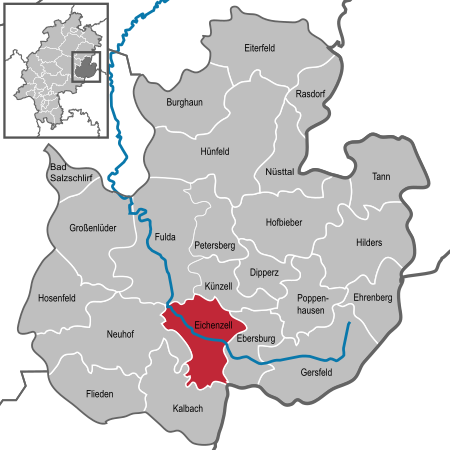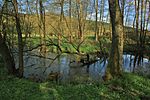Eichenzell
Fulda (district)Hesse geography stubsMunicipalities in Hesse

Eichenzell is a municipality in the district of Fulda, in Hesse, Germany. It is situated on the river Fulda, 7 km south of the town Fulda. The letter processing center for Deutsche Post in the greater Fulda area is located in Eichenzell. Die Rhöner Säuwäntzt, a Skiffle-Bluesband come from Eichenzell-Lütter and use the hillbilly image of the region in their performances.
Excerpt from the Wikipedia article Eichenzell (License: CC BY-SA 3.0, Authors, Images).Eichenzell
A 66, Eichenzell
Geographical coordinates (GPS) Address Nearby Places Show on map
Geographical coordinates (GPS)
| Latitude | Longitude |
|---|---|
| N 50.483333333333 ° | E 9.7 ° |
Address
A 66
36124 Eichenzell
Hesse, Germany
Open on Google Maps









